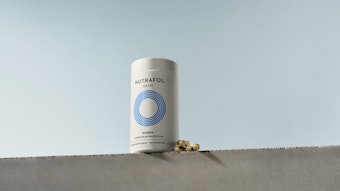
The continuously growing market of facial masks has produced an increasing number of interesting developments. A good part of innovation in this field concerns materials used to apply “active” cosmetic recipe onto the skin. Indeed, new ways of applying masks, now laid onto parts of the body other than the face, have multiplied consumer compliance and sales in this category of products. While traditional facial masks have been previously described,1 this time the focus is on facial sheet masks, which have multiple advantages.
First, they function as a dry, non-aqueous support to delicate active ingredients, avoiding their destabilization. Sheet masks also control and delay the delivery of active principles, which are progressively transferred to the skin.
Moreover, they apply a constant amount of active per square centimeter of skin, avoiding variations in product layer thickness that typically occur when fluid masks are distributed onto skin via spreading with fingers. Lastly, they contribute to the sensorial performance of the product—during that “magic moment” when a sheet mask is slowly detached, the fully moisturized skin feels born again, providing an immediate care-boosting effect.
Disposal of the worn mask also represents a ritual of skin and soul renovation, as all the superficial dirt—along with “bad” internal thoughts—can be jointly discarded.
The current demand for facial sheet masks is likely to expand through the growing geriatric population across the world, too.
Taken together,Transparency Market Research projects2 the global facial sheet masks market will reach US $336.7 million by the end of 2024.
Sheet Innovations
At the moment, the most animated field of mask innovation is in the development of the sheets themselves. Cosmetic producers are in pursuit of new materials that are safer, increasingly friendlier for the skin and environment, and sensorially pleasing. High-quality performance is also required to improve skin adhesion. New materials should work not only to support a fluid recipe, but also as functional skin treatments in and of themselves. Today, this category is segmented into non-woven, hydrogel, bio cellulose and cotton, although other nature-derived polymers are being developed.
Nature-derived: One new textile material3 derived from wood fibers has appeared that creates a transparent, nonwoven and silky soft surface using a technology called Lyocell. Contrary to rough fiber surfaces, the new textile is smooth and gives a nice skin feeling, therefore preventing irritation. In panel testing, the wood fiber masks reportedly scored perfectly thanks to their outstanding absorption and transportation properties, along with the easy release of lotions. Moreover, they are environmentally friendly.
What’s more, bacteria does not grow in the wood fibers thanks to the material’s unique moisture management properties. Indeed, as superficial moisture collects, it is immediately transported inside the fiber. This is due to the fibril structure forming submicroscopic channels between individual fibrils to regulate the absorption and release of moisture.
Bio cellulose can retain 100× its dry weight in fluid, and after a 30-min application, the fabric loses less than 10% of its water and serum fluid.
Such an arrangement creates conditions for superior absorption, ultimately preventing moisture from forming a film on the exterior of fibers, where bacteria can grow; in contrast, in synthetic fibers under the same conditions, the number of bacteria increases dramatically.
Similar properties are reported for bio cellulose, a material produced by microorganisms during the fermentation of coconut water. Bio cellulose fabric can retain 100× its dry weight in fluids, and after a 30-min application, the fabric loses less than 10% of those fluids. Bio cellulose masks also fit like a second skin, meaning the skin care ingredients infused in them are in constant contact with the skin, so it can continually soak in the treatment. Taken together, the moisture retention properties and superior adhesion of bio cellulose give skin a super boost of treatment, allowing for more absorption of nourishing ingredients—in a way, “force-feeding” the skin.4
Synthetic design: A new fully synthetic material for sheet masks was created by Dow Corning. Its Silicone Soft Skin Adhesive consists of cross-linked polydimethylsiloxanes (PDMS).5 The PDMS molecule coils in a mobile spiral configuration onto its inorganic axis surrounded by a non-polar organic cloud. This dense methyl array at interfaces results in a PDMS with reduced surface tension and reduced surface energy.
PDMS-based material properties are driven by the mobility of the open siloxane mesh structure and low intermolecular interactions. This allows silicones to wet, spread and subsequently adhere to the skin. This property reinforces the silicone’s ability to adhere to skin and subsequently release from it, performing as a true “pressure sensitive adhesive.” PDMS is also permeable to the diffusion of substances including gases, water vapor and active drugs, which are necessary for topical delivery.
In relation, functionalized PDMS transforms into elastomeric silicone soft skin adhesives (SSA), which differ from analogous silicone elastomers with their absence of reinforcing silica filler. While they have the consistency of a gel, they are not a truly polymeric gel.
The pressure sensitive adhesive property of PDMS materials is based mainly on the capacity of their surface to quickly wet the substrate and conform to its relief without excessive flow. The result is an immediate debonding, which happens at low peel or shear force. This benefits skin adhesion in that mask removal does not traumatize skin; no skin stripping, or painful skin or hair pulling is experienced.
Another advantage is the fact that SSAs have a low viscous component that limits their flow and, consequently, their readiness to absorb materials at the skin surface, such as stratum corneum cells and lipids. The adhesive surface of SSAs remain relatively clean, therefore they can be removed and re-adhered easily to the same location.
In other examples, L’Oréal6 holds a patent for a nonwoven facial mask designed with holes where consumers insert their ears, to obtain a firmer hold on the face. The company also patented7 a mask split in two halves; one for the upper and the other for the lower part of the face, which provides a better fit for longer durations of use.
Ethnic Inspiration
Like other personal care categories, the facial mask segment is rediscovering traditional medicines and herbs. Thanaka, for example, is a powder derived from several species of Murraya and Limonia acidissima—plants and trees native to China, Australia, the Pacific Islands and Indian subcontinents—used as far back as 200 years ago in facial masks. The yellowish powder produced by the branches of these trees shows antioxidant, anti-UV, anti-inflammatory, cooling, smoothing, cleansing and skin conditioning properties.8 It also provides acne relief,9 and in modern cities, can work as an anti-pollution ingredient.
Other culturally inspired ingredients are found in various kitchens around the world; e.g., mayonnaise, banana, yogurt and vinegar can impart home-made, mask-like properties.10
New textiles and materials for sheet masks provide skin care benefits and fit securely on the face.
Sheetless Masks
A newer approach to facial masks involves a device that covers the face and employs LED light to activate fibroblasts in skin previously treated with glycolic acid and vitamin C.11 According to accounts by beauticians, LED light slows the production of enzymes that break down collagen and make older skin lose its elasticity. LED light also speeds cellular production, pushing skin to regenerate faster, which creates a fresher-looking complexion.
The Neutrogena Light Therapy Acne Mask provides such an example, although it also purports to clear acne and promote skin healing via blue and red light exposure.12
Active Experiences
Facial mask innovations have expanded to incorporate new experiences, too. Glamglow’s Bubblesheet Oxygenating Deep Cleanse Mask, for example, contains green tea derivatives and works to reveal glowing, deeply purified skin in 3 min. The bamboo charcoal-infused sheet mask activates an oxygenating and tingling 3-D bubbling experience that is said to instantly invigorate and detoxify skin while removing makeup.13 Among its ingredients are methyl perfluorobutyl ether, a mix of mild surfactants to provide a light foam, retinyl palmitate, ceramide and hydroxyethyl urea.
A new formula from Jungbunzlauer combines fresh papaya, pomegranate and cucumber extract components in a xanthan gum gel, along with hyaluronic acid to wet the fabric mask sheets.14 In another formula, a new humectant, acetamido ethoxyethanol, is combined with sodium polystyrene sulfonate as the basis of a concentrate to be deposited onto a plastic and a fabric sheet (see Formula 1). This product moisturizes and firms the skin.15 Finally, a formula comprising various cosmetic properties while settling the mind is offered by Ashland. It contains carbomer and a hydrogel.16
As advances in mask shape, materials, actives, performance and energy emerge, the world of sheet masks will bring us surprises in the years to come.
References
- L Rigano, Facial masks, Cosm &Toil 129 (8) 46-53 (2014)
- transparencymarketresearch.com/pressrelease/sheet-face-masks-market.htm (Accessed Oct 19, 2017)
- lenzing-fibers.com/en/tencel/skin-friendly (Accessed Oct 19, 2017)
- belmondobeauty.com/why-is-a-bio-cellulose-sheet-mask-better-than-other-skin-care-treatments (Accessed Oct 19, 2017)
- X Thomas, Silicone adhesive in Health Care Applications, Dow Corning white paper 52-1057-01, scribd.com/document/347850096/52-1057-01-Silicone-Adhesives-in-Healthcare-Applications (Accessed Oct 19, 2017)
- Pat WO 2014140663 A1, Non-woven face mask and corresponding cosmetic treatment method, D Bordeaux, N Yoshioka and D Amar, assigned to L’Oréal (Sept. 18, 2014)
- Pat WO 2016076443 A1, Cosmetic mask for face, H Ogata, K Ohnishi, S Yamamoto, assigned to L’Oréal (May 19, 2016)
- DJ Mabberley, The Plant-Book: A Portable Dictionary of the Vascular Plants, Cambridge University Press (1997) pp 470
- T Streissguth, Myanmar in Pictures, Twenty-First Century (2007) pp 44, 73
- rd.com/health7beauty/homemade-facial-masks-recipes (Accessed Oct 19, 2017)
- dailymail.co.uk/femail/article-3237640 (Accessed Oct 19, 2017)
- neutrogena.com/skin/skin-acne/light-therapy-acne-mask/6810124.html (Accessed Oct 19, 2017)
- glamglow.com/product/15135/52696/shop-cleansers/bubblesheettm/oxygenating-deep-cleanse-mask (Accessed Oct 19, 2017)
- ulprospector.com/en/asia/PersonalCare/Detail/5050/710690/Face-Mask-with-Xanthan-Gum-and-ERYLITE (Accessed Oct 19, 2017)
- ulprospector.com/en/na/PersonalCare/Detail/581/646889/Hydrating-Tightening-Mask-Formulation-SH021-C7 (Accessed Oct 19, 2017)
- ulprospector.com/en/na/PersonalCare/Detail/305/734699/Serenity-Mask-Harmonizing-Face-Mask-Formulation-100-10142A (Accessed Oct 19, 2017)











